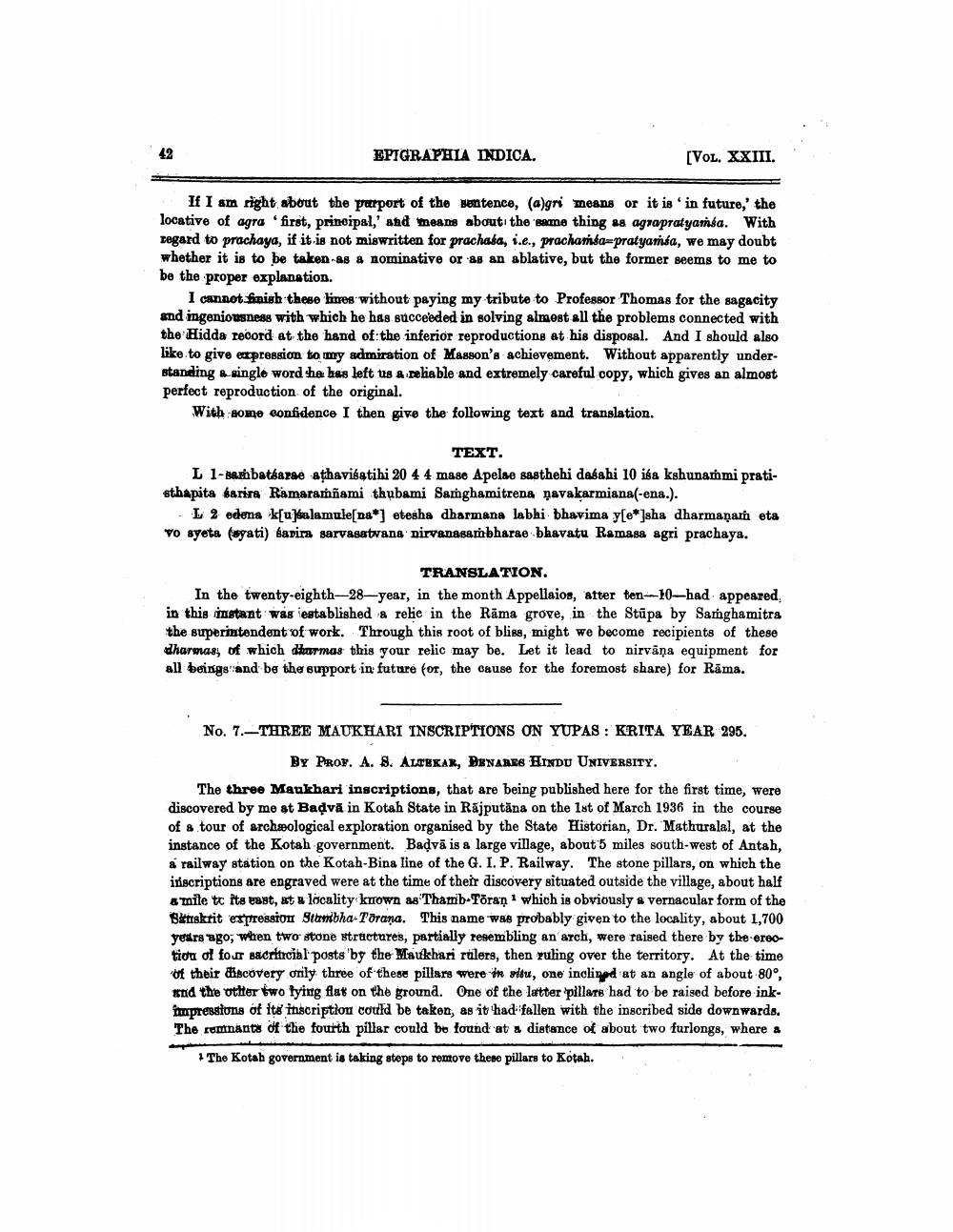________________
EPIGRAPHIA INDICA.
[Vol. XXIII.
If I am right about the prerport of the sentence, (a)gri means or it is ' in future,' the locative of agra 'first, principal,' and means about the same thing as agrapratyamsa. With regard to prachaya, if it is not miswritten for prachasa, i.e., prachanga=pratyamsa, we may doubt whether it is to be taken as a nominative or as an ablative, but the former seems to me to be the proper explanation.
I cannot finish these times without paying my tribute to Professor Thomas for the sagacity and ingeniousness with which he has succeeded in solving almost all the problems connected with the Hidda record at the hand of the inferior reproductions at his disposal. And I should also like to give expression to my admiration of Masson's achievement. Without apparently understanding a single word he has left us a reliable and extremely careful copy, which gives an almost perfect reproduction of the original.
With some confidence I then give the following text and translation.
TEXT. L 1-sambatkarse athaviếatihi 20 4 4 mase Apelae sasthehi dasahi 10 isa kshunammi pratisthapita Sariya Ramaramñami thubami Samghamitrena pavakarmiana(-ena.).
L 2 edena k[usalamule[na*) etesha dharmana labhi bhavima y[e*]sha dharmaņam eta Vo ayeta (syati) barira sarvasatana dirvanasambharae bhavatu Ramasa agri prachaya.
TRANSLATION. In the twenty-eighth-28-year, in the month Appellaios, after ten---10-had appeared, in this instant was established & relie in the Rāma grove, in the Stūpa by Samghamitra the superintendent of work. Through this root of bliss, might we become recipients of these dharmas; of which dtarmas this your relic may be. Let it lead to nirvāņa equipment for all beings and be the support in future for, the cause for the foremost share) for Rāma.
No. 7.-THREE MAUKHARI INSCRIPTIONS ON YUPAS : KRITA YEAR 295.
BY PROF. A. 8. ALEKAR, DENARES HINDU UNIVERSITY. The three Maukhari inscriptions, that are being published here for the first time, were discovered by me at Badvă in Kotah State in Rājputäna on the 1st of March 1936 in the course of a tour of archeological exploration organised by the State Historian, Dr. Mathuralal, at the instance of the Kotah government. Badvā is a large village, about 5 miles south-west of Antah, á railway station on the Kotah-Bina line of the G. I. P. Railway. The stone pillars, on which the inscriptions are engraved were at the time of their discovery situated outside the village, about half a mile to its east, at a locality known as Thamb-Tõran which is obviously a vernacular form of the Straktit espression Sttembha-Törana. This name was probably given to the locality, about 1,700 years ago, when two stone structures, partially resembling an arch, were raised there by the erection of four sacrttrcial posts by the Maukhari rulers, then ruling over the territory. At the time of their discovery only three of these pillars were in adtu, one inclined at an angle of about -80°, Kuid the other two tying flat on the ground. One of the latter pillare had to be raised before inkimpressions of its inscription could be taken, as it had fallen with the inscribed side downwards. The remnants of the fourth pillar could be found at a distance of about two furlongs, where a
1 The Kotab government is taking steps to remove these pillars to Kotah.




